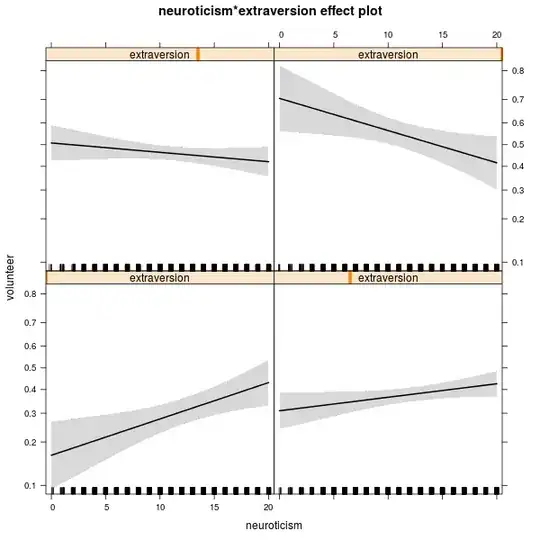I have a dataset of around 10,000 rows, with 500 features, response variable is binary classification.
I split the features into 5 equally sized groups (based on subject matter expertise), and trained 3 different models (RandomForest, XGBoost, SVM) on each of the 5 equally sized groups.
So now I have 15 different models. I then trained a single (RandomForest) model on the outputs of those 15 (the probability outputs, not hard predictions).
The results were surprising to me: The meta learner (single 2nd level RF model) did not do any better than the average individual "base" learner result. In fact, there were some base level models that did better than the meta-learner. I'm wondering why this could be?
I'm not very experienced with stacking, so I thought perhaps there are some general tips/strategies/techniques that I'm missing.
General Note:
- Each of the base models does significantly better than baseline.
- I give the meta-learner access to some of the base features + predictions (probability outputs from base learners). I don't give meta learner access to ALL base features because I've found that even base learners that are given all 500 features don't perform better than the base learners that get 100/500 of the features, so I don't think the algorithms can handle all features at once (maybe not enough rows for a single learner to be able to learn all relationships between all features?).
- I looked at the inter-model agreement among the base learners. As mentioned, it is a binary classification task, and each of the base learners achieves 65-70% accuracy (baseline is around 50%). Now, I looked at how much overlap there is between base models in the predictions they get right and wrong (presumably, if the predictions that they got right are all the same, there's no chance for meta-learner to combine them, since their value is the same). The base models generally get the same examples right and wrong 70-80% of the time. I don't know if this is high or low, but perhaps this could be part of the key. If it is, please explain in detail, as 20-30% difference still seems like a good amount of potential improvement in combination (unless that's random noise).
Info about my train/test splitting:
- I am using nested cross validation to generate the level 1 predictions.
- I am also using nested cross validation to train, test and evaluate the level 2 model.
- I am working with time series data, so I organized my cross validation in a way to try to avoid using "future" training data and "past" validation data. Here is a diagram that shows the general structure of my outer nested CV folds. My inner CV folds look the same way.
